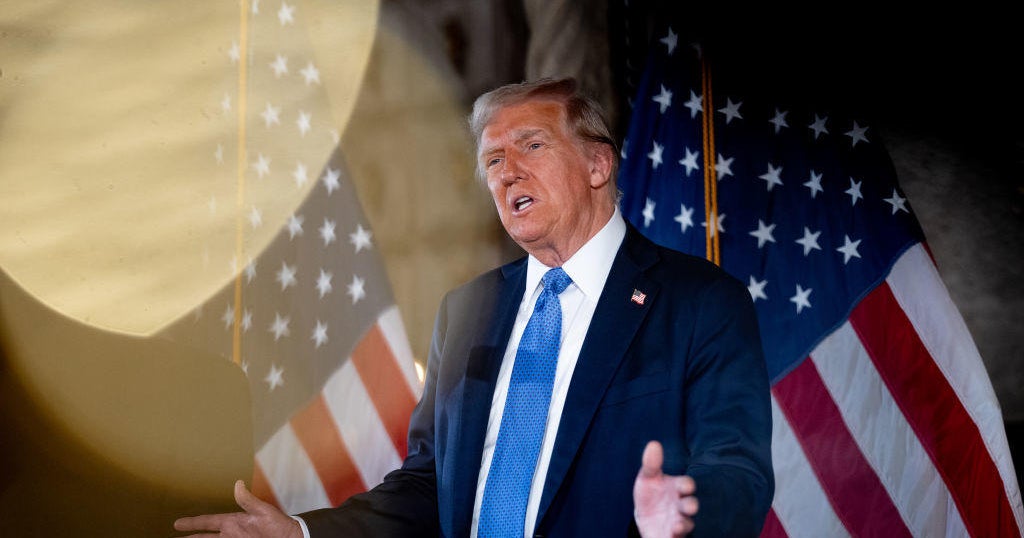U.S. manufacturing is in a recession. What does that mean for the rest of the country?
Friday's jobs report represented another SOS from the manufacturing sector, hard hit by the trade war and slowing global demand. Already in a recession, manufacturers added just 3,000 jobs in August, continuing a trend that's fostering concerns about the rest of the economy, not to mention President Donald Trump's re-election chances.
A widely used definition of a recession is when economic output shrinks for two straight quarters. According to Federal Reserve data, the manufacturing sector contracted in both the January through March period and again from April through June.
Other indicators are suggesting further shrinkage through the summer: A monthly survey by the Institute for Supply Management, an association of purchasing managers, this week showed that U.S. factory production and new orders fell sharply in August
"Just over a year ago, manufacturing was the star pupil sector of the U.S. economy, producing more jobs than had been expected; it's turned into a problem child, and it's not necessarily a stellar performer in employment data," Mark Hamrick, a senior economic analyst at Bankrate.com, told CBS MoneyWatch. "The problems affecting the sector are well advertised, and unfortunately to some degree self-inflicted."
Reviving American manufacturing has been a key goal for Mr. Trump, who signed into law steep corporate tax cuts designed to spur business investment. Last year, when the sector was adding an average of 22,000 jobs a month, Mr. Trump touted the gains as among his administration's triumphs, describing manufacturing jobs as "among our best and most important."
The scenario has since taken a sharp turn for the worse, due to factors that the White House both can and can't control.
"The president came into office offering the hope that we'd see a resurgence of manufacturing in the United States. Now manufacturing is in trouble, and the reasons include trade disputes and tariffs," said Hamrick. "The reality is manufacturing is in a contraction. It is not broadly better. What changed is his policy."
Impact of uncertainty
Increased tariffs raise the cost of doing business, and the uncertainty about a resolution to trade disputes "makes it very difficult for employers to make hiring decisions," said Andrew Challenger, vice president of Challenger Gray & Christmas, an outplacement consultancy that tracks layoffs.
In other words, the Trump administration's trade war is hitting manufacturing on multiple fronts, undermining benefits from the corporate tax cut.
"The biggest part of the story is the fallout from the trade war," Dean Baker, senior economist at the Center for Economic & Policy Research, said. Companies are refraining from investing in an environment where it's unclear if China, a major market for U.S. goods, will remain open, said Baker, who also cited uncertainty over the costs of parts from China used in U.S. manufacturing.
The slowdowns in manufacturing and industrial goods "certainly gives us pause, and has us thinking about the other side of the economic cycle," despite strong employment trends like low unemployment, Challenger noted.
"Manufacturing just isn't that large a share of jobs anymore"
If there's a silver lining to the manufacturing decline, it's that the sector is no longer the American economy's driving force. Instead, the service industry — everything from education to healthcare — now dwarfs manufacturing, with 129 million service-industry employees compared with 12.7 million manufacturing workers.
"For better or worse, manufacturing just isn't that large a share of jobs anymore," Baker said.
By comparison, when Mr. Trump was born in 1946, more than a third of American workers labored in factories. Today, fewer than one in 10 Americans work in manufacturing.
Wages for manufacturing jobs have also taken a hit. In 1990, the average hourly wage in manufacturing was about 10% higher than the overall average. That's no longer the case. In August, the average hourly wage for the private sector was $28.11 as a whole, compared to $27.83 for manufacturing, Baker noted.
A not-so-big drag
All to say, while the slump in manufacturing is a drag on the the economy, it's unlikely on its own to trigger an economic recession in the U.S., economists say.
"Manufacturing has not shepherded the bulk of U.S. economic activity for many years now — we can still have a relatively healthy U.S. economy if the service sector continues to do well," Hamrick said.
Mark Haelele, chief investment officer at UBS Global Wealth Management, said he believes a broader contraction in U.S. economic activity is unlikely this year or next, although he adds the trade war is a wild card.
"If all of the tariffs that have been announced so far are actually implemented, the U.S. economy is likely to be sitting on the edge of recession by early next year," Haelele wrote in a note this week. "Further escalation of the trade dispute or new tariffs on auto imports could be more than the economy can handle."



